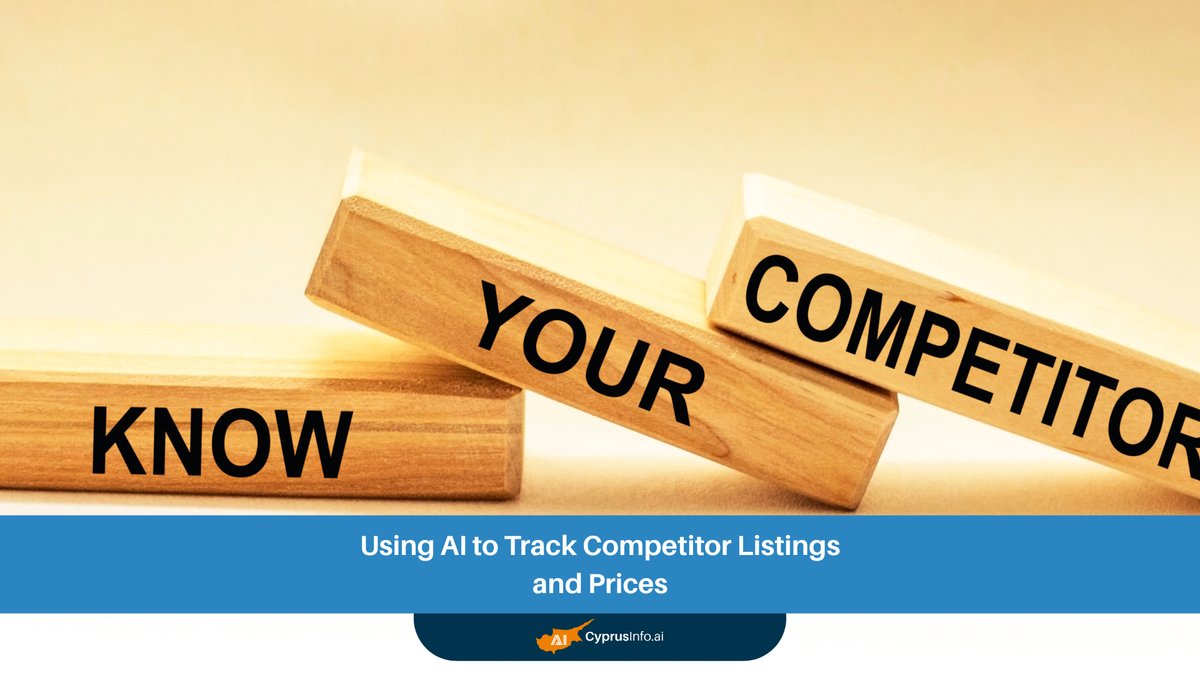In today's hyper-competitive marketplace, staying ahead means more than just having a great product or service. It demands an acute awareness of your competitors' every move, from their latest product listings to their dynamic pricing strategies. Traditionally, this was a painstaking, manual process, often leading to outdated or incomplete data. However, the advent of Artificial Intelligence has transformed the landscape of competitive intelligence, offering unprecedented speed, accuracy, and depth. Welcome to the era of AI Competitor Analysis, where machines tirelessly track, analyze, and predict market shifts, giving your business an undeniable edge.
The digital age has blurred geographical boundaries, making market competition fierce and global. Businesses, regardless of their size, are constantly vying for consumer attention and market share. Understanding not just who your competitors are, but what they are offering and how they are pricing it, is paramount. This comprehensive guide will explore how leveraging AI can revolutionize your approach to competitor tracking, focusing specifically on listings and prices, and empowering you with actionable insights for strategic decision-making.
The Unparalleled Power of AI Competitor Analysis
AI Competitor Analysis goes far beyond simple web scraping. It involves sophisticated algorithms that learn, adapt, and identify patterns from vast datasets. These tools can monitor millions of data points across countless platforms, delivering real-time market data and AI-powered market insights that were previously unimaginable. Instead of reacting to market changes, businesses can now anticipate them, making proactive adjustments to their own offerings and AI pricing strategies.
Scalability: AI can monitor a much larger volume of competitors and data points than human teams.
Speed: Data collection and analysis happen in near real-time, providing fresh insights.
Accuracy: AI minimizes human error in data extraction and interpretation.
Depth: Uncovers subtle trends and correlations that might escape manual review.
Beyond Basic Tracking: The Nuances of AI for Competitive Intelligence
At its core, AI Competitor Analysis leverages various machine learning techniques such as natural language processing (NLP) for textual data, computer vision for image analysis, and predictive analytics for forecasting trends. This combination allows AI to not only identify new listings but also understand their features, assess their quality, and even gauge public sentiment surrounding them. For pricing, AI models can detect dynamic pricing with AI adjustments, promotional offers, and inventory levels.
"The future of business strategy isn't just about what you know, but how quickly you know it, and how intelligently you act upon it. AI-driven competitive intelligence is the bedrock of that future." – Business Strategist Quote
How AI Tracks Competitor Listings with Precision
Tracking competitor listings is crucial for understanding market saturation, product innovation, and competitive positioning. Whether you're in e-commerce, real estate, or any service industry, knowing what your rivals are putting out there is half the battle. AI Competitor Analysis tools automate this process with remarkable efficiency.
Key Methods for Listing Tracking:
Web Crawling and Scraping: AI-powered bots systematically browse competitor websites, marketplaces, and social media platforms to extract new product/service listings. These aren't simple scrapes; intelligent algorithms can identify structural changes in pages, ensuring data extraction remains robust even if website layouts change.
Natural Language Processing (NLP): Once data is collected, NLP algorithms analyze product descriptions, specifications, customer reviews, and even news articles to understand the unique selling propositions (USPs), features, and potential target audiences of new listings. This provides rich context beyond just the listing's existence.
Image Recognition: For product-based businesses, AI can analyze product images to identify design trends, material choices, and even flag potential intellectual property infringements.
Change Detection: AI continuously monitors existing listings for updates, modifications, or removals, providing a complete historical record of competitor activity.
Consider a scenario in the real estate sector. An AI system can track thousands of new property listings daily across multiple platforms, extract details like property type, size, location, amenities, and then compare them against your own portfolio or market benchmarks. This level of automated competitor research is invaluable.
Leveraging AI for Dynamic Price Monitoring and Strategy
Price is often the most sensitive competitive lever. In dynamic markets, prices can change multiple times a day. Manually tracking these fluctuations for a large number of products or services is impossible. This is where Price Tracking AI shines, offering sophisticated capabilities to monitor, analyze, and inform your own pricing strategies.
The Mechanics of Price Tracking AI
AI models are trained to identify pricing elements on web pages, even when presented inconsistently. They can distinguish between base prices, sale prices, bundled offers, and shipping costs. Furthermore, these systems can track inventory levels, which are often correlated with pricing adjustments. When a competitor's stock is low, they might raise prices, and vice versa. An effective AI pricing strategy factors in these subtleties.
Traditional vs. AI-Powered Price Monitoring
Feature | Traditional Monitoring | AI-Powered Monitoring |
|---|---|---|
Scope | Limited number of competitors/products | Unlimited, scalable across entire market |
Frequency | Daily/weekly/monthly checks | Hourly/real-time updates |
Accuracy | Prone to human error, delays | High precision, automated verification |
Insight Depth | Basic price comparisons | Contextual analysis, trend prediction, inventory correlation |
Actionability | Reactive adjustments | Proactive, data-driven strategy adjustments |
Implementing Dynamic Pricing with AI
Beyond merely tracking, AI enables proactive strategies. By analyzing competitor prices, historical sales data, customer demand, and even external factors like weather or events, AI can recommend optimal price points for your own products. This capability is known as dynamic pricing, a powerful strategy for maximizing revenue and market share. Imagine an e-commerce platform automatically adjusting prices for thousands of products multiple times a day to remain competitive yet profitable – that's the power of dynamic pricing with AI in action.
Benefits of Advanced AI Competitor Analysis
Integrating AI Competitor Analysis into your business strategy unlocks a multitude of advantages that can significantly impact your bottom line and market position.
Strategic Pricing Decisions: Make data-backed pricing choices that respond to market shifts, competitor actions, and consumer demand. This is essential for maintaining competitive advantage and optimizing profitability.
Product Development and Innovation: Identify gaps in the market, discover emerging product features, and understand what customers are looking for by analyzing competitor offerings and customer feedback.
Enhanced Marketing Campaigns: Tailor your messaging and promotions to directly counter or differentiate from competitor strategies. Understanding their listings allows you to pinpoint their target audiences and craft more effective campaigns. AI content strategy can benefit immensely from this intelligence.
Risk Mitigation: Detect potential threats, such as new market entrants, aggressive pricing wars, or disruptive innovations, early on. This allows for timely strategic responses.
Improved Sales Performance: Equip your sales teams with insights into competitor strengths and weaknesses, enabling them to better position your products and services. AI sales performance analysis can then integrate these external factors.
The ability to have AI for competitive intelligence working round-the-clock transforms a reactive business into a proactive market leader.
Challenges and Considerations in AI Competitor Analysis
While the benefits are substantial, implementing a robust AI Competitor Analysis system comes with its own set of challenges.
Key Considerations:
Data Quality and Volume: The effectiveness of AI hinges on the quality and quantity of data it processes. Ensuring clean, relevant data streams is paramount.
Ethical and Legal Boundaries: Respecting terms of service, data privacy laws (like GDPR), and ethical guidelines is crucial. Data should be publicly available and not obtained through illicit means.
Computational Resources: Processing vast amounts of data for machine learning competitor analysis requires significant computational power and storage.
Integration Complexity: Integrating AI tools with existing business systems (CRM, ERP, marketing platforms) can be complex, requiring technical expertise.
False Positives/Negatives: While AI is highly accurate, it's not infallible. There can be instances of misinterpretation, especially with nuanced data, requiring human oversight.
Overcoming these challenges often involves partnering with specialized providers or investing in dedicated in-house AI teams. The right market intelligence software can significantly ease these burdens.
Integrating AI Competitor Analysis into Your Business Strategy
To truly harness the power of AI Competitor Analysis, it needs to be seamlessly integrated into your broader business strategy. This isn't just about acquiring a tool; it's about fostering a data-driven culture.
Steps for Effective Integration:
Define Clear Objectives: What specific competitive questions do you want AI to answer? Are you focusing on new product launches, pricing wars, or market entry strategies?
Identify Key Competitors: While AI can scan broadly, focus on your most impactful rivals first.
Choose the Right Tools: Select competitor monitoring tools that align with your industry, data needs, and budget.
Establish Data Pipelines: Ensure a continuous flow of high-quality data from various sources to your AI system.
Train and Refine Models: AI models need initial training and ongoing refinement to improve accuracy and adapt to market changes.
Interpret and Act on Insights: The most crucial step. AI provides insights; human intelligence translates these into actionable strategies and decisions.
Monitor and Iterate: Competitive landscapes are constantly evolving. Regularly review the performance of your AI system and make necessary adjustments.
Embracing AI-powered market insights requires a commitment to continuous learning and adaptation within your organization.
CyprusInfo.ai: Your AI Partner for Competitive Edge
At CyprusInfo.ai, we understand the critical need for robust AI Competitor Analysis in today's fast-paced environment. Our platform offers cutting-edge AI-powered solutions designed to empower businesses with unparalleled market intelligence.
What CyprusInfo.ai Provides:
Advanced Listing Tracking: Automatically monitor competitor product and service listings across a multitude of online sources, capturing descriptions, features, and launch dates. Our sophisticated algorithms ensure you never miss a new market offering.
Precision Price Monitoring: Gain granular insights into competitor pricing strategies, including dynamic pricing changes, promotional offers, and historical price trends. Our AI pricing strategies tools provide real-time alerts and comprehensive reports.
Actionable Market Insights: Beyond raw data, CyprusInfo.ai leverages machine learning competitor analysis to transform complex data into clear, actionable insights, helping you identify opportunities, mitigate risks, and refine your business strategies.
Customizable Dashboards and Reports: Access intuitive dashboards that visualize competitive data, allowing you to track key performance indicators and generate custom reports tailored to your specific needs.
Strategic Consulting: Our experts can guide you through the implementation and interpretation of AI Competitor Analysis, ensuring you fully leverage the technology to achieve your business objectives.
Whether you're looking to optimize your pricing, discover new product opportunities, or refine your marketing efforts, CyprusInfo.ai is your indispensable partner for gaining a competitive advantage through intelligent competitor monitoring tools.
Frequently Asked Questions About AI Competitor Analysis
What exactly is AI Competitor Analysis?
AI Competitor Analysis uses artificial intelligence, machine learning, and natural language processing to automate the process of collecting, analyzing, and interpreting data about your business rivals. This includes tracking their listings, pricing, marketing campaigns, customer reviews, and overall market positioning to provide actionable insights.
How does AI help track competitor listings?
AI employs web crawling, scraping, NLP, and image recognition to identify new or updated product/service listings across various online platforms. It extracts detailed information like descriptions, features, images, and launch dates, then categorizes and analyzes this data for competitive intelligence.
Can AI really predict competitor pricing changes?
While not always 100% predictive, AI can identify patterns and correlations in historical pricing data, market demand, inventory levels, and external factors to forecast potential pricing adjustments. This allows businesses to implement more proactive AI pricing strategies.
Is AI competitor analysis ethical?
Ethical AI competitor analysis involves collecting publicly available data in a transparent manner, without violating terms of service or privacy laws. It's about using intelligence to improve your business, not to engage in unfair practices. Reputable competitor monitoring tools adhere to these standards.
What types of businesses benefit most from AI for competitive intelligence?
Businesses in highly dynamic and competitive sectors such as e-commerce, retail, real estate, travel, finance, and technology benefit immensely. Any business where pricing and product offerings frequently change or where market information is abundant can gain a significant edge.
How long does it take to implement AI competitor analysis tools?
Implementation time varies based on the complexity of the solution and the scope of monitoring. Basic setup can take days, while comprehensive, integrated systems might take weeks to months. Partnering with a specialist like CyprusInfo.ai can streamline the process.
What are the key benefits of using AI-powered market insights?
Key benefits include making more informed pricing decisions, identifying market gaps for new product development, optimizing marketing campaigns, mitigating competitive risks, and improving overall business agility and sales performance. It transforms raw data into actionable intelligence.
Can AI help identify emerging market trends?
Absolutely. By continuously analyzing vast amounts of data from competitors, news sources, social media, and consumer reviews, AI can detect subtle shifts and patterns that signal emerging market trends, allowing businesses to adapt early and capitalize on new opportunities.
Is AI competitor analysis expensive?
The cost varies significantly depending on the scope, features, and provider. While there's an initial investment, the ROI often justifies it through optimized pricing, improved product strategies, and increased market share. Many providers offer tiered solutions to fit different budgets.
How does AI compare to traditional manual competitor research?
AI is vastly superior in terms of speed, scalability, and depth of analysis. Manual research is time-consuming, prone to error, and limited in scope. AI provides real-time market data and uncovers insights that human analysts might miss, allowing for proactive strategic moves rather than reactive ones.
The Future is Now: Embracing AI for Market Dominance
The competitive landscape is no longer a static battlefield; it's a rapidly evolving ecosystem where speed and intelligence determine survival. AI Competitor Analysis is not merely a technological advancement; it's a strategic imperative for any business aiming for sustained growth and market leadership. By automating the laborious tasks of tracking competitor listings and prices, AI frees up human capital to focus on higher-level strategic thinking, innovation, and customer engagement.
The insights derived from AI for competitive intelligence allow businesses to fine-tune their AI pricing strategies, identify profitable niches, launch successful products, and craft compelling marketing narratives. This proactive approach not only keeps you abreast of market changes but positions you to drive them. Embracing AI means moving beyond simply reacting to the market and instead becoming a formidable force within it.
It's time to transform your competitive strategy from a guessing game into a precise, data-driven science. The future of market intelligence is here, and it's powered by AI.



